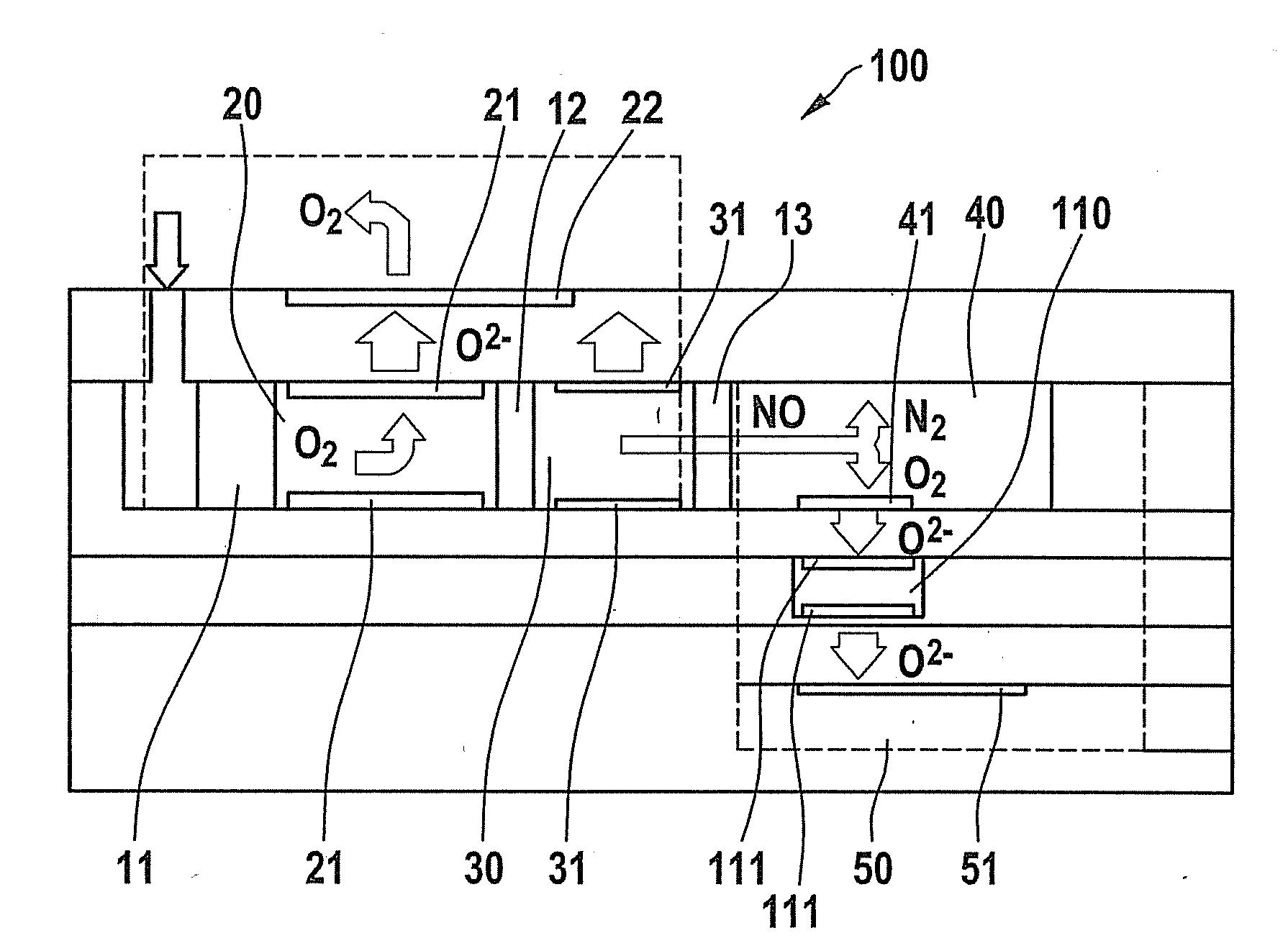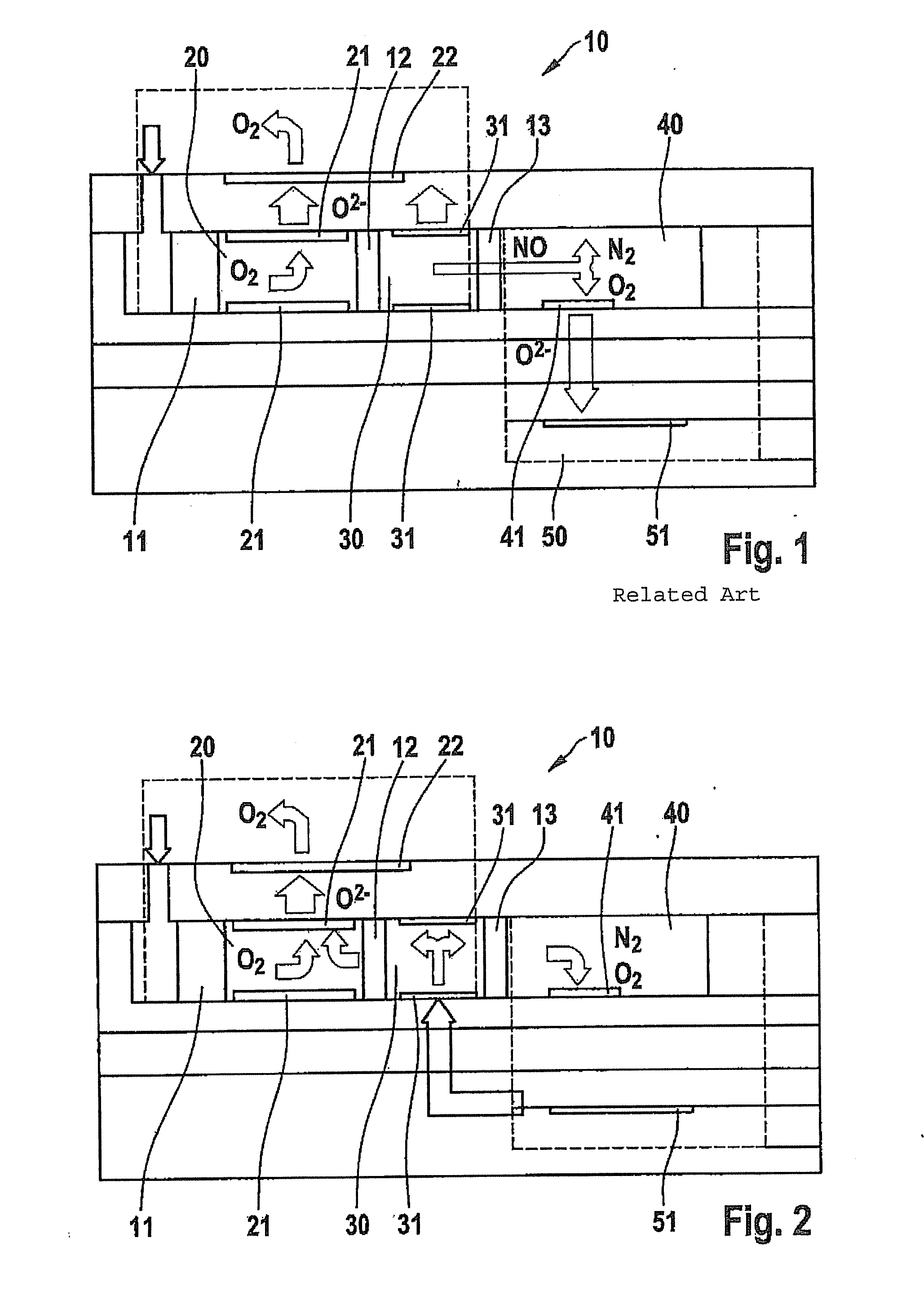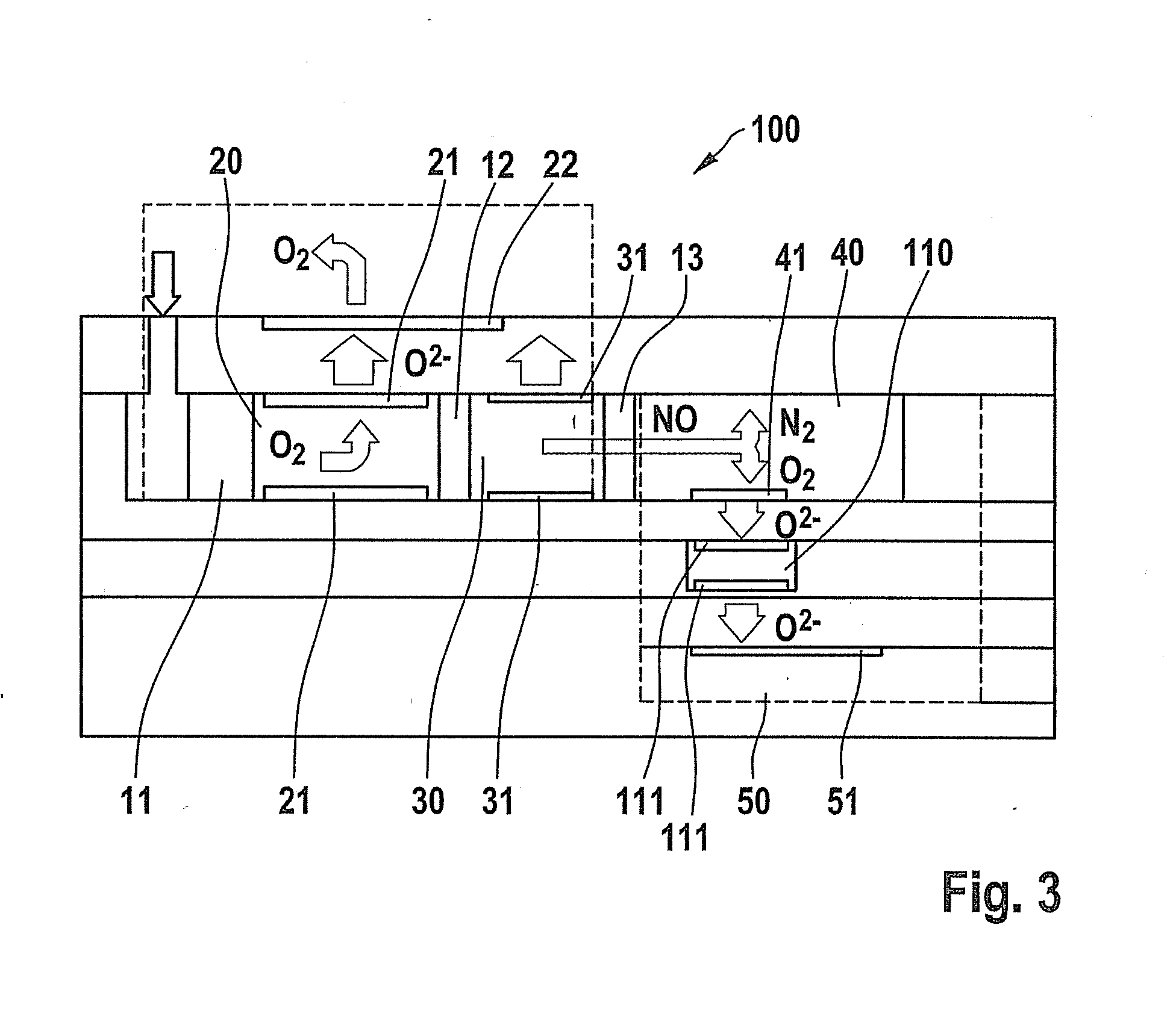Method for measuring and/or calibrating a gas sensor
a gas sensor and sensor technology, applied in the direction of instruments, machines/engines, electrochemical variables, etc., can solve the problems of affecting the accuracy of measurement, etc., to achieve the effect of improving the measurement accuracy and being readily uploaded and used
- Summary
- Abstract
- Description
- Claims
- Application Information
AI Technical Summary
Benefits of technology
Problems solved by technology
Method used
Image
Examples
Embodiment Construction
[0023]The operation of a conventional double chamber nitrogen oxide sensor is illustrated in the following based on FIG. 1. Nitrogen oxide sensor 10 includes a first chamber 20 having a first internal pump electrode pair (IPE1) 21. In a second chamber 30, another internal pump electrode pair (IPE2) 31 is provided. In a third chamber 40, an NOx electrode 41 is situated as a decomposition electrode provided for decomposing the nitrogen oxides. An external pump electrode (APE) 22 is situated facing the exhaust gas. A reference electrode (RE) 51 is provided in an air reference channel 50 or a pumped reference cell. During a normal conventional operation, the exhaust gas mixture enters chamber 20 of the sensor in this diagram from above on the left side of sensor 10 through a first diffusion barrier 11. A voltage between first internal pump electrode 21 and external pump electrode 22 or also reference electrode 51 is used to remove the oxygen from the exhaust gas mixture. Furthermore, se...
PUM
| Property | Measurement | Unit |
|---|---|---|
| voltage | aaaaa | aaaaa |
| voltage | aaaaa | aaaaa |
| voltage | aaaaa | aaaaa |
Abstract
Description
Claims
Application Information
 Login to View More
Login to View More - R&D
- Intellectual Property
- Life Sciences
- Materials
- Tech Scout
- Unparalleled Data Quality
- Higher Quality Content
- 60% Fewer Hallucinations
Browse by: Latest US Patents, China's latest patents, Technical Efficacy Thesaurus, Application Domain, Technology Topic, Popular Technical Reports.
© 2025 PatSnap. All rights reserved.Legal|Privacy policy|Modern Slavery Act Transparency Statement|Sitemap|About US| Contact US: help@patsnap.com



